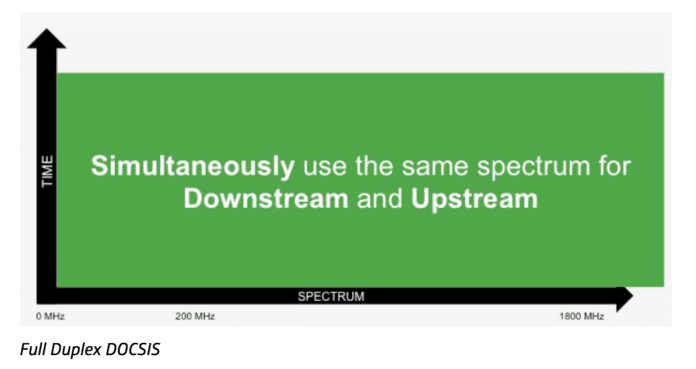Simultaneous, symmetric upstream and downstream transmission requires a new approach to interference management for DOCSIS 3.1
DENVER–As cable companies look to support increasingly bandwidth intensive use cases, including a new wave of uplink-heavy and latency sensitive applications, DOCSIS 3.1 has proved very beneficial in increasing the capacity and efficiency of copper infrastructure. CableLabs recently updated the specification to Full Duplex DOCSIS 3.1, which brings symmetrical peak upstream and downstream capacity to 10 Gbps. In the previous version of the standard, upstream traffic topped out at 1 Gbps.
CableLabs President and CEO Phil McKinney pointed to the important role of hybrid fiber coaxial plants in supporting present and future bandwidth needs noting that, in the U.S., “more than 90% of households are connected to an HFC network, and consumers typically have higher download speeds than upload speeds. By enabling Full Duplex DOCSIS, the upstream and downstream traffic can flow at up to 10 Gbps concurrently, doubling the efficiency of spectrum use.”
Cisco was on hand at the ongoing SCTE Cable-Tec Expo to demonstrate Full Duplex DOCSIS in a group of seen cable modems. In a company blog post, Daniel Etman, product marketing director of Cisco’s Cable Access Business, explained the interference issues that need to be addressed in clusters of Full Duplex DOCSIS modems.
“By incorporating seven modems in the demo, we can show you the FDX DOCSIS Interference Groups including IG discovery capabilities. And it will also demonstrate how normal DOCSIS 3.0 modems can work on the same network as FDX DOCSIS modems.”
He continued: “With FDX DOCSIS, the network supports simultaneous bi-directional transmissions across the same spectrum, hence full duplex. And interferences between the full-duplex transmissions must be mitigated for it to work.”

